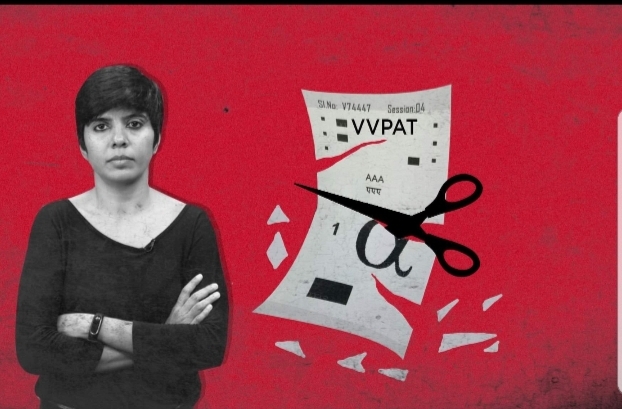Why Did Election Commission Disposed off VVPAT Slips of 2019 LS Polls in Such a Hurry?
“The used or printed VVPAT slips in any election… shall be retained for one year and shall thereafter be destroyed,” says Rule 94 (b) of the Conduct of Elections Rules, 1961. And has found that the Election Commission of India has already destroyed the printed VVPAT slips used in 2019 Lok Sabha elections. And that too, only four months after the results were announced in May 2019.
In an RTI reply, the Public Information Officer of Delhi Election Commission told us that “the VVPAT slips have been disposed off”. Attached with the RTI reply was the Election Commission’s letter, dated 24 September 2019, to Chief Electoral Officers of all States and Union Territories ordering the “disposal of VVPAT printed paper slips”.
The question is, why the rush and urgency to destroy VVPAT slips in four months? Why couldn’t the Election Commission store the VVPAT slips, which are crucial evidence of how you and I voted, for a period of one year?
Remember, when we vote, the VVPAT slip verifies if our vote has gone to the candidate of our choice. If the VVPAT slip does not show the name of the candidate of our choice, we can immediately inform the Election Officer at the voting booth about the malfunctioning of the VVPAT machine. And how crucial VVPAT slips are as evidence to detect possible tampering or manipulation of the entire voting process.
We had shown that in every voting booth, the VVPAT machine is connected to the Ballot Unit in such a manner that when we cast our vote, it is first recorded in the VVPAT machine, and only after that does it go to the Control Unit of EVM.
The VVPAT machines had been identified for every constituency, they were checked, maintained and programmed by private engineers engaged by the government for up to two weeks, during which the VVPAT machines were clearly vulnerable to tampering.
So, if at all the EVM-VVPAT machines were tampered with in 2019, the VVPAT slip showing the name of the candidate chosen by the voters could be crucial evidence while investigating any such allegation.
But now, as the RTI reply reveals, all VVPAT slips have been destroyed and any potential evidence that the VVPAT slips may have contained, has also been destroyed. Which is against election rules.
In a country where the ‘babudom’ holds on to documents and files for decades, even those which are of no use, one may wonder why these VVPAT slips were disposed off with such unusual urgency.
Legal experts say, it is worrying that these VVPAT slips were destroyed within four months, in clear violation of rules. The EC should explain the reason for the hurry. They also pointed that the EC can destroy VVPAT slips only in exceptional circumstances, where they have a valid reason to do so.The Election Commission’s RTI reply, has no clear reason explaining why the VVPAT slips were disposed off in less than a year.
There are at least eight cases of ‘mismatch’ between EVM and VVPAT vote counts were reported in Rajasthan, Himachal Pradesh, Manipur, Meghalaya and Andhra Pradesh.
The Election Commission ordered an inquiry into these cases in July 2019. The RTI seeking information on the inquiry conducted. The EC replied in November 2019, saying the information was not available as the matter is still under the consideration of the EC’s Technical Experts Committee.
Now, whether the EC has disposed off or destroyed the VVPAT slips related to these eight cases, we do not know. But we do have this EC letter from September 2019, ordering all states and Union Territories to dispose off their VVPAT slips.
This raises an important query. If the VVPAT slips related to these eight cases have also been destroyed, how can an inquiry into the ‘mismatch’ of EVM and VVPAT vote counts be conducted at all?
And so, we ask again – why did the Election Commission not follow the rules, and destroy the VVPAT slips within just four months? Was it, dare we say, destruction of evidence of vote tampering?
Why couldn’t the EC retain VVPAT slips of India’s most crucial elections? The one that decides the prime minister of the world’s largest’s democracy?


